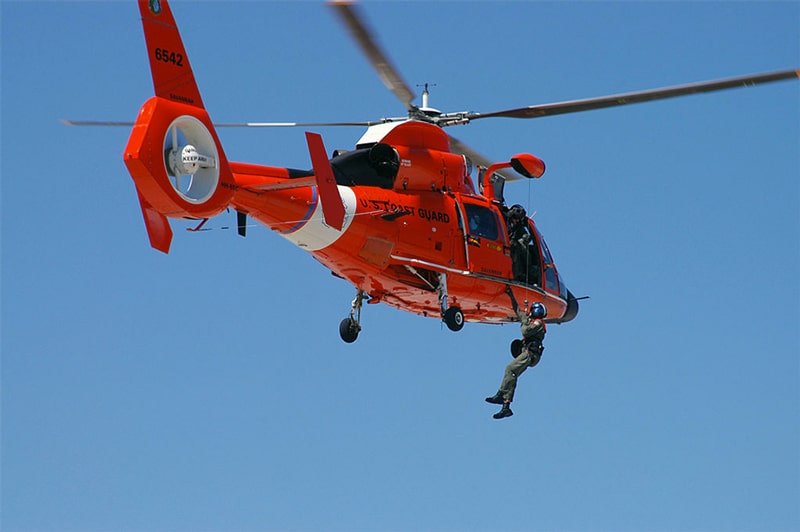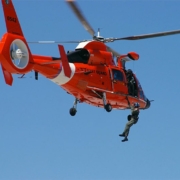Sailing Personnel Emergencies
As the skipper of a vessel, you are expected to be able to handle situations thrust upon you at a moment’s notice. Many of these situations are boat-related issues, but there are also crew injury issues for which you should be prepared to assess and handle at least enough until professional assistance arrives.
Consider if you are knowledgeable enough right now to handle:
- a broken limb
- excessive bleeding
- a severe burn
- hypothermia
- dehydration
- head injury
- a diabetic with extremely low blood sugar level
- a heart attack or identify its symptoms
- extreme allergic reaction to shellfish
- severe seasickness
- alcohol, medication, or drug reaction or overdose
If you are in the slightest intimidated by any situation above, we highly recommend you take a Red Cross medical emergency class. The class is usually conducted over two evenings and deals with everything from cuts and burns to CPR. There is no substitute for professional instruction. There is a significant discussion of medical emergencies that are likely to occur at sea in the NauticEd Safety at Sea Course.
A Final Note: Human life is certainly the most precious entity on any sailing vessel. Preparation and knowledge of how to handle medical emergencies can make you a living hero with living friends and relatives.
Heart Emergencies
A serious personnel medical emergency includes a heart attack. Sometimes this event is improperly diagnosed. The victim is often shy about admitting they have chest pains or one of the other common symptoms. Immediately make the person as comfortable as possible and assure them that help will be forthcoming. Again, communication is the key. If in cell phone range – call 911. If out of range, use your VHF radio where you can also receive advice.
A relatively new device, the defibrillator, is now marketed in marine stores for use at sea. This instrument has saved thousands of lives and is becoming a standard piece of emergency equipment for sailors
Every vessel should have a medical first aid kit that includes recommended materials for sailors. The severity of the injury will dictate whether or not to continue or return to land for more extensive treatment. If you are the person making this decision always, be conservative and seek professional medical help as quickly as possible.
Circumstances surrounding these health topics are easily overlooked, but the vessel’s skipper must assume full responsibility for taking action when a health problem arises while sailing.
Seasickness
Seasickness can quickly lead to dehydration. If you’re a hardy old captain, don’t look upon your sick crew as wusses. You’re setting yourself up for a serious situation.
Here is some education about seasickness that can help you and your crew overcome it. You might even email it out to your crew beforehand. This was taken from Kona Hawaii Fishing with Captain Jeff Rogers
Thanks Jeff!
|
Avoiding Sea Sickness Scopolamine: Bonine ® : Sea Band ® : Ginger: |
Jeff also recommends a new product called MotionEaze. Here is a link to it on Amazon.
We also recommend that as soon as someone begins to feel queasy they take the helm and steer the boat. This is almost a guaranteed and instant cure. It completely takes their mind off the sickness.
Also, try acupressure. Apply light thumb pressure to the inside of the wrist inside of the artery—just down from the hand and where your thumb can dig in.
Dehydration
Dehydration is the result of failure to drink plenty of water. Heat and wind are contributing factors. As a skipper, you need to be watching out for your crew and making sure your crew (and yourself) drink plenty of water (more than normal). This means never forgetting to bring an adequate supply with you. Usually, there is a water tank on board but many people tend to shy away from drinking old tank water. As a precaution, you might consider storing water treatment tablets on board to treat tank water and convince a non-hardened crew member to drink, should bottled supplies run out.
One of the biggest contributors to dehydration on a boat is a crew member puking his or her guts out. Anytime you have a sick crew member you should be on high alert that they will begin to suffer from dehydration quickly.
A second major contributor is drinking too much alcohol combined with not enough water.
Symptoms:
- Mild: thirst, dry lips, dark urine color. Remedy: Rehydrate with water and electrolyte solutions.
- Moderate: partial heatstroke; very dry mouth, sunken eyes, skin loses elasticity. Remedy: Rehydrate with water and electrolyte solutions. Keep a constant watch on the victim and seek medical attention and guidance.
- Severe: heatstroke; all of the above symptoms plus rapid, weak pulse, rapid breathing, confusion, and lethargy. Remedy: Rehydrate and get medical attention quickly; an IV for fluids will be needed.
Hypothermia
Hypothermia ensues when the body temperature falls below 95°F (35°C). It can occur without freezing temperatures because a combination of cold, wind, and water can work synergistically to reduce body temperatures. Decreased core temperatures cause a gradual cessation of all body functions. An initial drop of only one or two degrees triggers the shivering response, followed by clumsiness, stumbling, slow reactions, confusion, and difficulty in speaking. The patient may be unaware that this is happening.
When the body temperature reaches 90°F (32.2°C), shivering ceases, and the muscles become rigid in an attempt to produce heat. Breathing and pulse rate decrease and mental abilities diminish further, leading to coma, ventricular fibrillation, and death when the temperature approaches 80°F (26.7°C).
Hypothermia occurs most often to mariners who become wet from rain or spray with cold, windy conditions for extended periods of time. These are usually acute cases, and relatively easy to treat. Submersion hypothermia in near-drowning victims is far more serious because the person is not only hypoxic from lack of oxygen but is subjected to the complications of lowered body temperature as well.
| Symptoms of hypothermia | ||
| Class | Body temp °F (°C) | Symptoms |
| Mild |
<96 (35.6) |
Intense shivering with impaired ability to perform complex tasks. |
| Moderate | 86-90 (30 – 32.2) | Shivering ceases, muscles become rigid. Exposed skin is blue and puffy. Movements are jerky. Patient can maintain posture and is aware of surroundings. |
| Severe | 81-85 (27.2 – 29.4) <78 (25.5) |
Coma, lack of reflexes, atrial fibrillation Respiratory and cardiac failure, pulmonary edema, ventricular fibrillation, and death. |
Definitive Assessment of Hypothermia
Assessing the degree of hypothermia guides treatment, so knowing the core body temperature is important. This is best taken by a rectal thermometer because an oral temperature will likely be lower than the rectal and is not accurate for the core body temperature. Be very attentive to breathing and pulse, both of which will likely be slowed and more difficult to detect. Do not initiate CPR until you’re certain it’s necessary because of a lack of breathing and a carotid pulse.
Primary Care of a Hypothermic Patient
Emergency care has three primary goals:
- Prevent further heat loss.
- Rewarm the patient safely.
- Avoid causing ventricular fibrillation.
Mild Hypothermia is defined as a core body temperature of 90°F (32.2°C) and above. A healthy individual who is shivering can be warmed relatively quickly with little risk. Remove wet clothing and dry the person; wrap the person in multiple warm blankets and cover the head, or use a hot shower to raise the victim’s temperature. Administer hot, sweet liquids to the victim to elevate temperature and alleviate hypoglycemia.
Moderate Hypothermia presents in victims with a core body temperature below 90°F (32.2°C). The victim will lack shivering and begin to have muscular rigidity. To treat moderate hypothermia, take the same steps as noted above for mild hypothermia, but warm the victim gradually. Offer no fluids to the victim until swallowing is assured, and monitor vital signs and temperature continually while observing the level of consciousness. Seek medical advice.
Profound (Severe) Hypothermia or body temperature below 85 °F (29.4 °C) causes metabolic acidosis and metabolic and electrolyte abnormalities with the risk of ventricular fibrillation. These result in a high mortality rate, especially in the absence of immediate medical attention in an intensive care unit. These consequences occur in spite of warming efforts, and in some cases are caused partly by the patient getting warmer. Our efforts to the victim must be to extricate from the cold, wet environment, prevent further heat loss, and allow warming to occur slowly. The best method of re-warming in these cases is wrapping the victim in a sleeping bag and covering the head. Seek medical advice immediately.
Detecting a pulse in a patient with hypothermia may be difficult, so signs of life and pulse should be monitored carefully for 60 seconds. Observing persistent breathing or movement by the patient should prompt a strategy of watchful waiting, but if no signs of life are detected in the 60 seconds, then cardiopulmonary resuscitation (CPR) should be started. This 60-second rule is because if CPR is done when the heart is beating, the act of CPR can cause ventricular fibrillation. The exception to this rule is with a victim of submersion hypothermia who is not breathing. Since drowning may be involved, CPR should be initiated immediately.
We advise doing a CPR course.
Sunburn
Direct, indirect, and reflective light can all cause sunburn. You can be severely sunburned even on a cloudy day. Ensure children are adequately protected; reapply sunscreen often. Wear wide brim hats or hats with neck and side protection. Use sunglasses. Keep spare sunscreen, sunglasses, and hats on your boat. Protect your feet, nose, and ears. The risk of sunburn peaks during the day usually between 11:00 am and 3:00 pm.
Helicopter Rescue
Helicopter rescue is something you should be aware of; you will want such a rescue if you have a crew member who cannot safely wait until you reach the shore. While it may seem unlikely to you now, a little knowledge on this topic can save a life. Don’t be timid about asking for this type of rescue if needed. The Coast Guard rescue teams live for and actually enjoy these types of rescues.

- The helicopter crew will give you instructions via VHF or phone before they arrive. Listen carefully and take notes; you will not be able to hear once they arrive.
- Start the engine and if directed by the pilot, follow the heading given.
- Dowse sails and secure tightly.
- Clear the deck of all loose and potentially loose gear.
- Ensure all your crew are wearing PFDs.
- A weighted line will be sent down first. Note that the rotor blades can cause massive amounts of static electricity. The helicopter crew will ground the line into the water to discharge this electricity.
- Once grounded you can take the line and gather in slack in a bucket (wear gloves). Don’t attach it to the boat.
- One of the crew from the helicopter will be lowered to the boat. Follow this person’s instructions once they are on the vessel.
An orange handheld smoke or buoyant orange smoke flare should be used to attract the helicopter. A RED PARACHUTE ROCKET SHOULD NOT BE USED. On a dull day a handheld or pinpoint flare may be used, but take note of the safety concerns and burn risk around a handheld flare.







